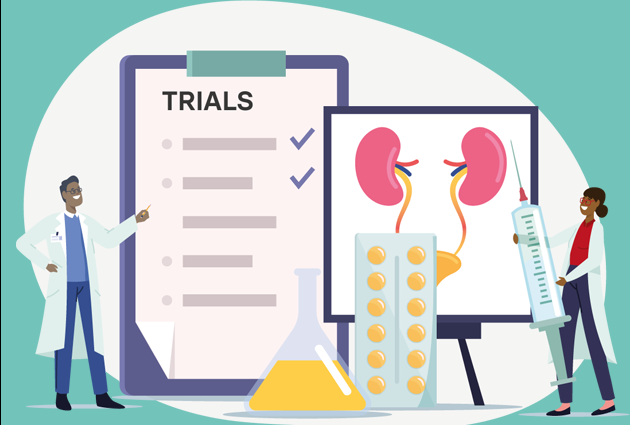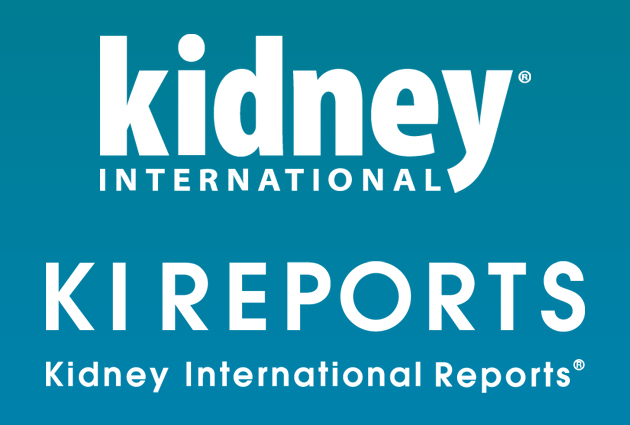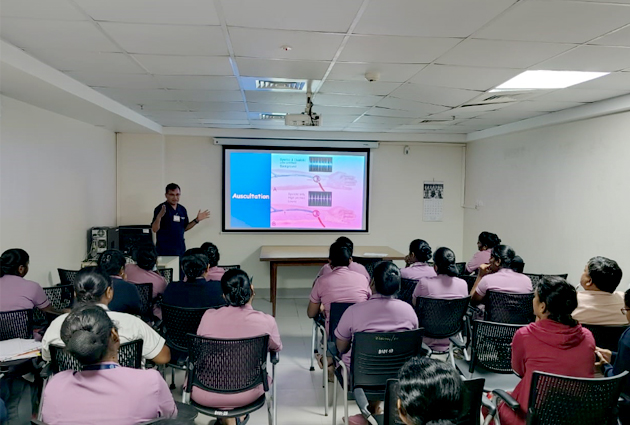A New Intervention for TARGETing Resistant Hypertension
Effect of Alcohol-Mediated Renal Denervation on Blood Pressure in the Presence of Antihypertensive Medications: Primary Results From the TARGET BP I Randomized Clinical Trial
Kandzari et al, Circulation, 2024 Jun 11;149(24):1875-1884
ISN-ACT Global Trials Focus coordinator Megan Borkum summarizes the design and outcomes of one of the latest ISN-ACT Global Trials Focus (GTF) selections.
Summary:
The TARGET BP I study evaluated the efficacy and safety of a new renal denervation (RDN) method using dehydrated alcohol. It enrolled 301 adults with uncontrolled or treatment-resistant hypertension (office systolic BP 150-180 mmHg, office diastolic BP ≧90 mmHg, and mean 24-hour ambulatory systolic BP 135-170 mmHg, despite 2-5 antihypertensive medications, including diuretics).
Participants were randomly assigned 1:1 to receive either RDN or a sham procedure. The primary endpoint was the mean 24-hour ambulatory systolic BP change at 3 months, adjusted for baseline. Secondary endpoints included mean differences in office and ambulatory BP between the groups at various times. Blood and urine tests were conducted to assess adherence to BP medication. The average age of the cohort was 56.1 years, with approximately 74% being men, and most were prescribed 3 or more antihypertensives at baseline.
Compared to the sham controls, RDN led to a significant reduction in 24-hour ambulatory systolic BP at 3 months, with mean reductions of –10 mmHg for RDN versus –6.8 mmHg for the sham procedure, resulting in a treatment difference of –3.2 mmHg (95% CI, –6.3 to 0; P = 0.0487). At 3 months, the mean change in office systolic BP was –12.7 mmHg for the RDN group and –9.7 mmHg for the sham group, yielding a non-statistically significant treatment difference of –3 mmHg (95% CI, –7 to 1; P = 0.173).
During the study, there were no significant differences in ambulatory or office diastolic BP, medication changes, or patient adherence. At 6 months, adverse safety events were rare, with one case of accessory renal artery dissection in the RDN group (0.7%).
Commentary:
This is the largest trial to date assessing alcohol-based RDN among patients with resistant hypertension. Alcohol-based RDN was associated with a reduction in 24-hour ambulatory systolic BP at 3 months, thus meeting the trial’s primary endpoint. However, there were no significant differences between the two groups in terms of systolic or diastolic office BP at 3 months, as those receiving the sham procedure also experienced a substantial drop in office BP.
Investigators speculate that, similar to previous renal denervation trials, all participants adhered more consistently to their BP medications during the trial, which could account for the improvement. Nevertheless, this method appeared safe, but a longer-term evaluation is ongoing to assess sustained BP reduction in the RDN group and potential loss of BP control in the sham group. Larger, more varied populations should also be studied.
Explore and share the ISN “Guide for Everyone” series of selected clinical trials demystified for the layperson.











